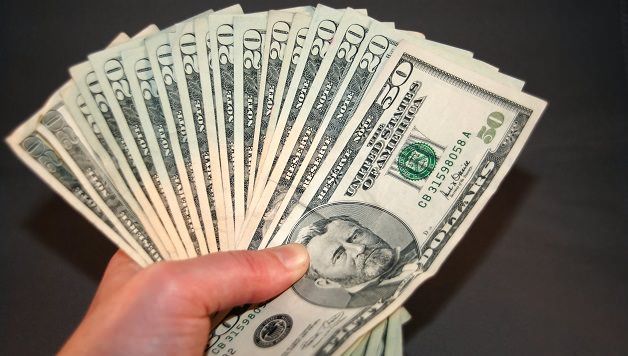In recent times, memecoins have taken the spotlight in the cryptocurrency arena, especially following the launch of the controversial $Trump coin. The U.S. Securities and Exchange Commission (SEC) has made it clear that most memecoins do not qualify as securities under the Howey test. However, this does not stop clients from being curious about these digital assets.
In this edition of Crypto for Advisors, Janine Grainger from Easy Crypto in New Zealand provides a comprehensive overview of memecoins, including their mechanics and associated risks. Additionally, Kieran Mitha, a next-generation investor, shares insights into learning about memecoins in our Ask an Expert section.
Understanding Memecoins: A Brief Overview
Memecoins are unique cryptocurrencies that sprout from internet culture, social media trends, and jokes. Unlike established cryptocurrencies such as Bitcoin or Ethereum, which have demonstrated their value in a diversified portfolio over time, memecoins often rely on hype, community enthusiasm, and celebrity endorsements for their value.
While many memecoins begin as playful initiatives, they can gain popularity rapidly through viral marketing and speculative trading—though such traction is typically fleeting.
The Impact of Memecoins: Hype and Risks
The emergence of memecoins has garnered significant attention due to their cultural relevance and potential for substantial short-term gains. Influential figures, such as Elon Musk, can dramatically affect the market with a single tweet, igniting speculative interest. This allure of quick profits comes with a hefty price tag, as memecoins are notoriously volatile, leading to unpredictable price fluctuations.
For instance, the recent launch of $Trump saw its market cap soar to $14.5 billion within 48 hours, only to crash two-thirds shortly after. Such episodes highlight the extreme risks associated with these assets, as many investors can suffer severe losses in a matter of hours.
The Legal Landscape: Are Memecoins Regulated?
Interestingly, the SEC’s stance on memecoins has allowed them to flourish. Unlike utility-driven cryptocurrencies that face regulatory scrutiny, memecoins often operate in a grey area, as they do not promise financial returns. This lack of regulation has contributed to their proliferation in the market.
The Dark Side: Scams and Rug Pulls
However, the memecoin sphere is not without its dangers. It is rife with ‘pump-and-dump’ schemes, where influencers promote a token to inflate its price before cashing out, leaving unsuspecting investors with worthless assets.
Recent incidents, such as the launch of $HAWK by viral personality Hailey Welch and the promotion of $LIBRA by Argentina’s President Javier Milei, have raised concerns about market manipulation. These examples underscore the perception of memecoins as risky investments with limited long-term value.
Key Considerations for Potential Investors
For those intrigued by memecoins, it is crucial to approach these assets with caution. Here are some important factors to consider:
– **Liquidity**: Memecoins often have low trading volumes, leading to extreme price fluctuations and difficulties in entering or exiting positions.
– **Community Sentiment**: Social media plays a significant role in the price movements of memecoins. Keeping an eye on platforms like X (formerly Twitter) and Telegram can provide insights into market trends.
– **Tokenomics**: Understanding the supply dynamics of a memecoin—whether it has a fixed supply or an unlimited one—can affect its long-term value.
– **Pump-and-Dump Risks**: Be wary of tokens that are aggressively marketed with unrealistic promises, as these often signal short-lived hype cycles rather than sustainable investments.
– **Early Entry vs. Longevity**: Investing early can yield high returns, but the risk of sudden crashes is prevalent. Some investors prefer established memecoins with robust communities over chasing the latest fads.
While memecoins can offer the allure of quick profits, their volatility and vulnerability to manipulation categorize them as high-risk assets. Financial advisors must educate clients on the speculative nature of memecoins and emphasize the importance of proactive risk management.
Expert Insights: Ask an Expert
**Q: I see people on social media getting rich from memecoins. Can I do the same?**
A: While some have indeed made significant profits, it’s essential to recognize that social media often highlights success stories while ignoring the many who incur losses. Memecoins are highly speculative, and their prices can fluctuate dramatically due to hype, making them unpredictable.
**Q: What role does community play in the success of a memecoin?**
A: Community is vital for any successful memecoin. Unlike traditional investments, where value is often tied to fundamentals, memecoins thrive on social media engagement and grassroots enthusiasm. A strong community can drive adoption and relevance, but without sustained interest, even the most popular memecoins can quickly fade.
**Q: How can I learn about memecoins before investing?**
A: Start by following reputable cryptocurrency news outlets and engaging in community discussions on platforms like Twitter, Reddit, and Discord. Understanding the project’s roadmap, developer engagement, and tokenomics is crucial. Be aware of the risks involved, and conduct thorough research before making any investment decisions.
In Conclusion: Proceed with Caution
As the memecoin phenomenon continues to evolve, investors must remain vigilant. While the potential for quick gains exists, the risks involved are substantial. Approach memecoins as high-risk bets rather than guaranteed paths to wealth, and always prioritize due diligence.
Stay Informed: What’s Next in Crypto
The U.S. Bitcoin Strategic Reserve and the Digital Asset Stockpile were recently announced at the White House’s first Digital Asset Summit. Furthermore, U.S. banks have been advised they can now custody cryptocurrencies alongside other assets. Lastly, the U.S. Bitcoin Act of 2025 has been introduced to the House, signaling ongoing developments in the cryptocurrency space.



